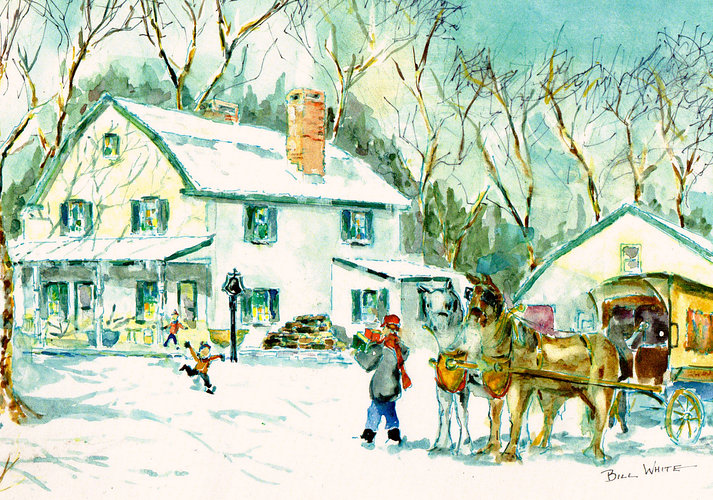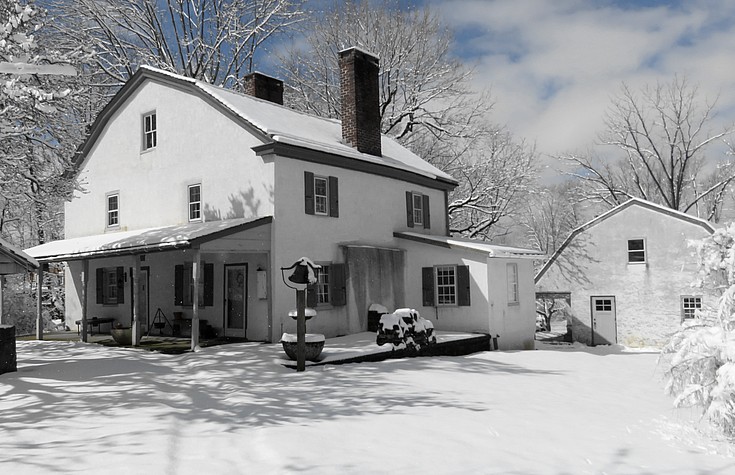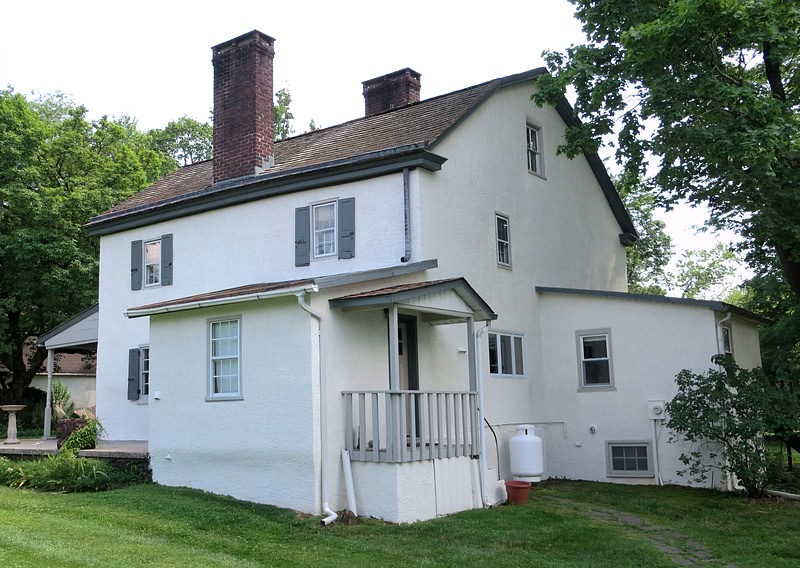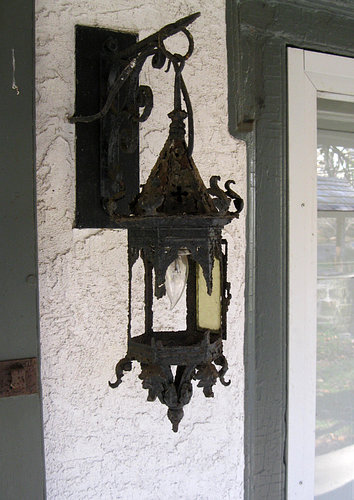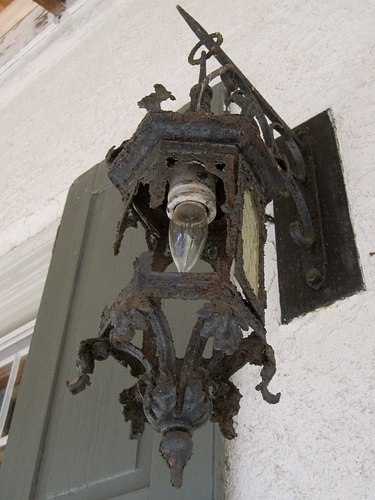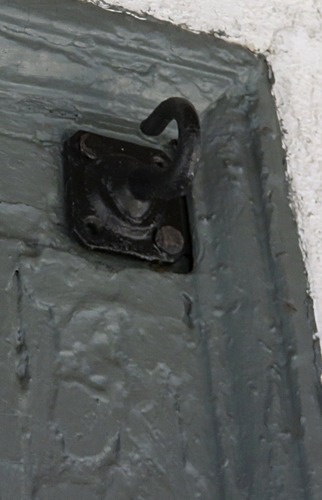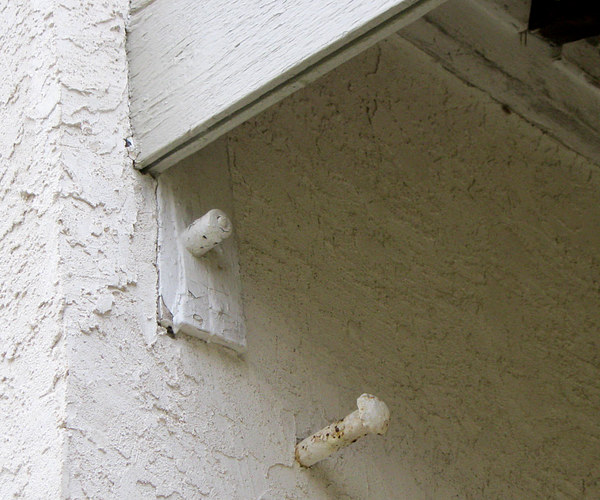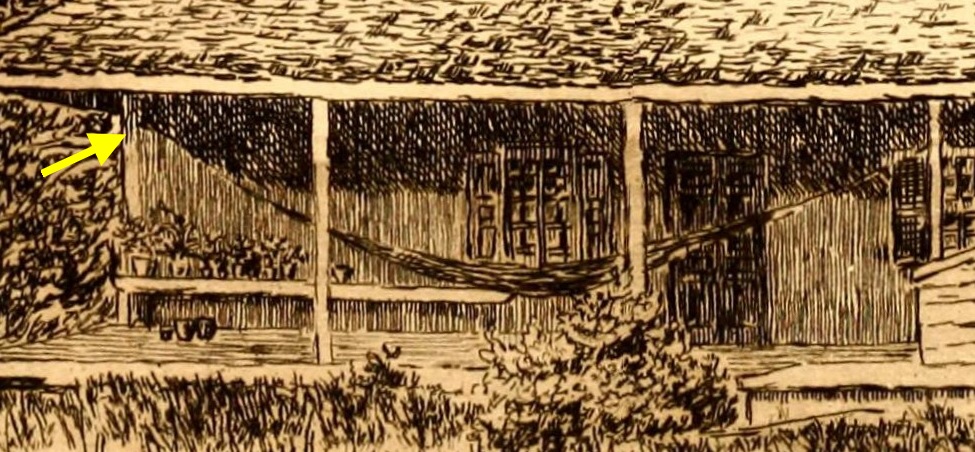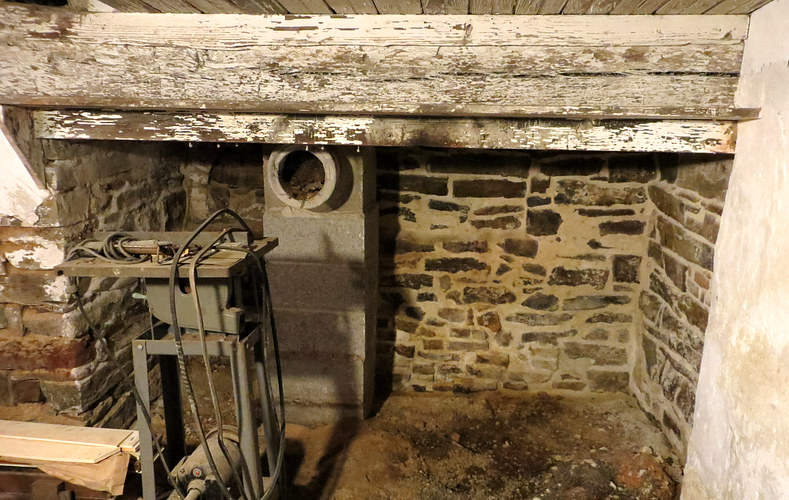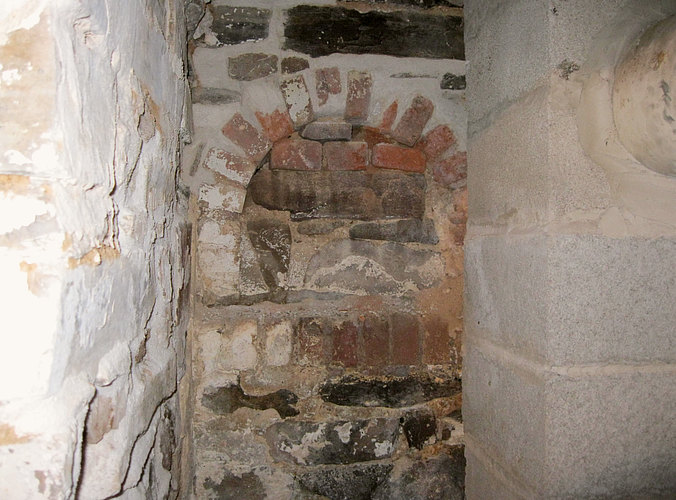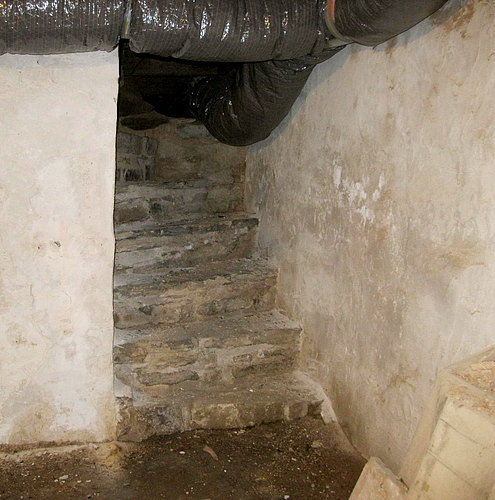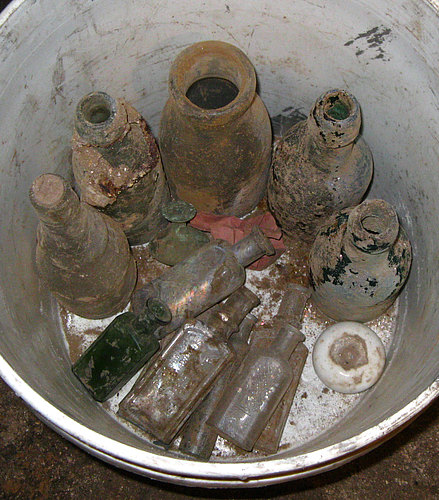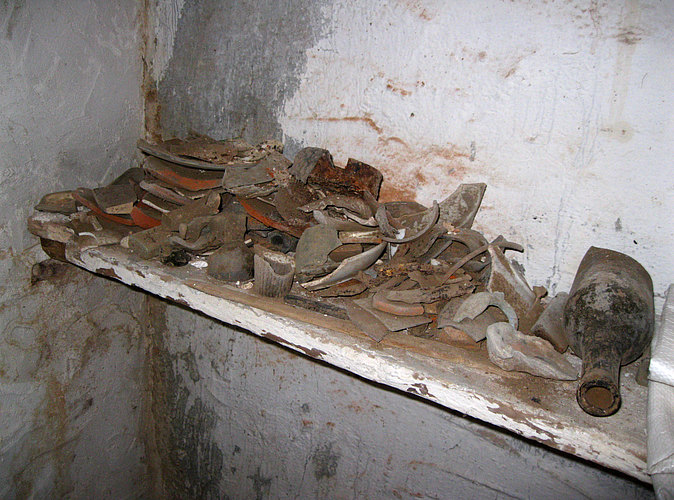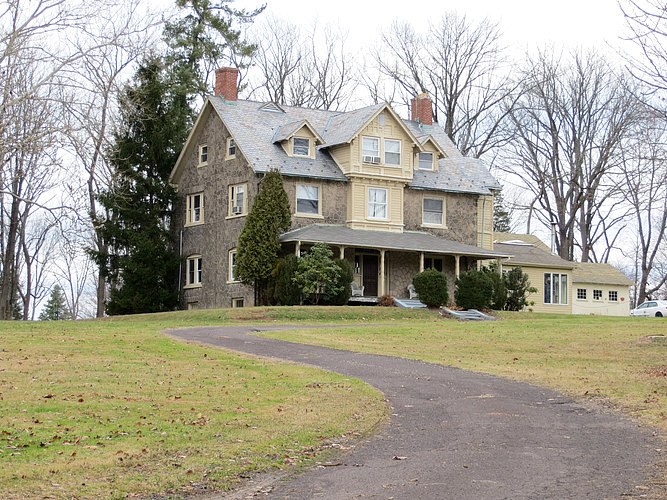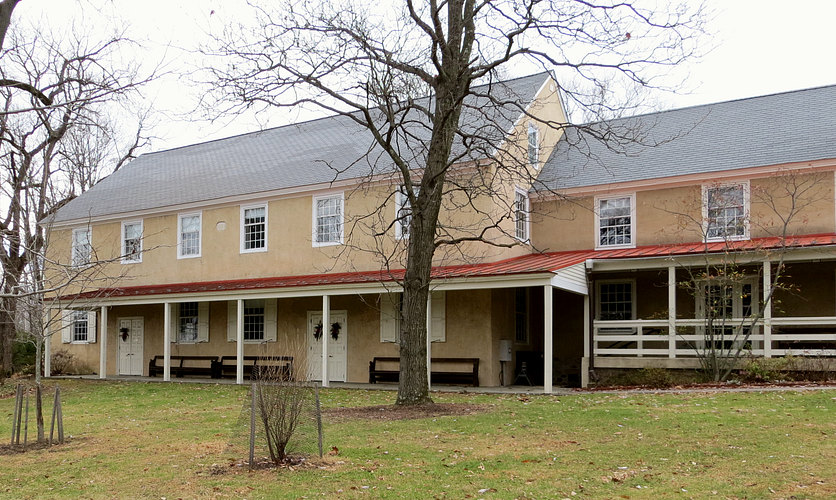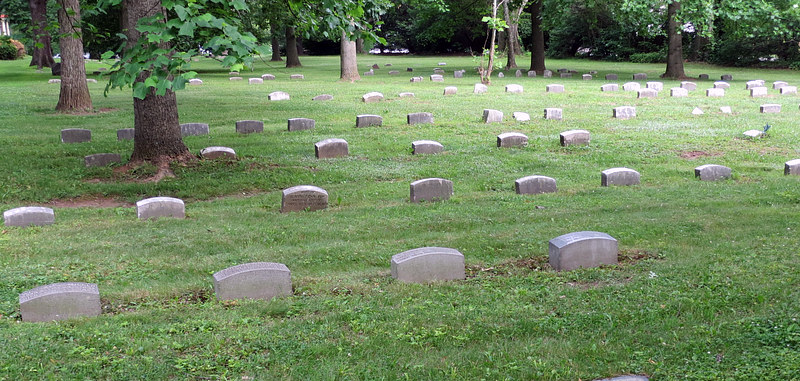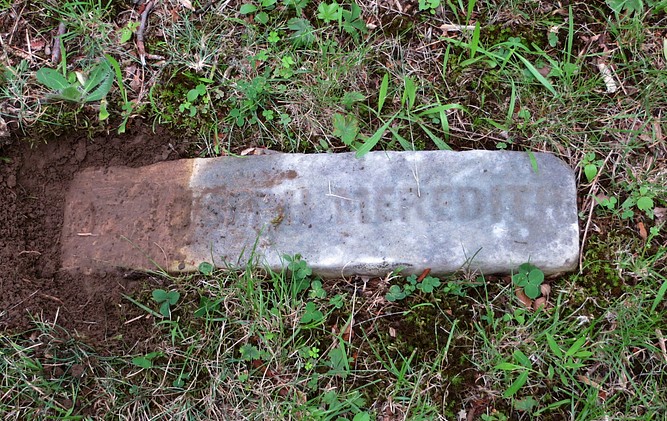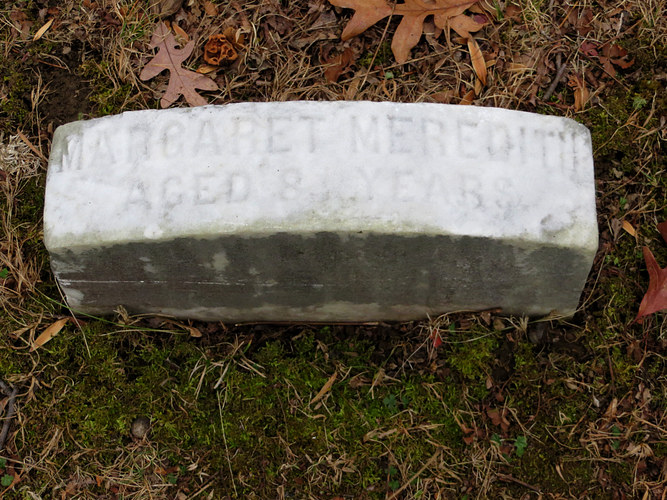| The
Meredith House |
|
|
|
|
Watercolor Christmas card painted by
Bill White in 2011. |
|
|
|
|
|
A similar
scene. |
|
|
|
|
|
The view from
the back, showing two additions. The laundry room is on the left, an
office is on the right. |
|
|
After all the work we did on the porch, I have to confess we never use the front doors.
We go in through the back. |
|
|
|
|
The house has been extensively renovated over
the centuries. There is little left that is "old" visible. |
|
|
|
|
|
|
| This
ancient light fixture next to the stone house door still works. It
has a single pane of glass left in it. Being electric, it was a
later addition. |
| |
|
|
|
|
|
Here's an old paint encrusted hook in the top of
the door
jamb, and how it appeared after the paint was removed.
There was
once one on each side of the door, but what they were for is a
mystery. |
|
| |
|
|
|
A spike in the wall under the porch roof that predates the
stucco. |
| |
|
|
| The
spike is in the exact spot the hammock is shown hanging from in the
drawing. |
| |
Except for some old shutter hinge pins, that's about it. Everything
else is covered in stucco. Let's go down to the basement!
|
| |
|
|
|
In the basement is found the "summer
kitchen." This fireplace opening is over six feet wide. |
| The
stack of cinder blocks is the flue to an old boiler that used to
heat the house. |
| |
|
|
|
Inside the fireplace is an oven, now sealed with stone and brick. |
|
|
|
Andrea excavated this staircase, which had been buried. To the right
is some of the loot she uncovered while removing the dirt.
The staircase no longer opens to the first floor. Speaking of floor,
the basement floor is dirt. |
| |
|
|
Old
shelf covered with shards of glass and pottery that were found
during the excavation.
I can't help but wonder if Owen Evans or his family ever handled any
of this stuff. |
|
|
|
We have some details
about Owen and his family, thanks to Howard Jenkins and
James A. Quinn, historian for Gwynedd Meeting.
Owen and his son Samuel (who inherited
the house) both listed themselves as "store-keeper" by
occupation. Jenkins says the store was actually in the
house. In the History of Montgomery County Pennsylvania,
Illustrated, a sentence describing the general area
reads, "A store was kept here by Owen Evans before 1765."
Owen was also elected Justice of the
County Court in 1726, and Samuel became
a school teacher in North Wales, PA. Owen
Evans (1687 - 1757) married Ruth Miles (1693 - 1736) on
January 3, 1715 (or 1716). They were married at the Radnor
Meeting in Chester County, Pennsylvania. Ruth's sister was
married to Evan Evans, Owen's cousin. Presumably, this is how
Owen met Ruth.
Children of Owen and Ruth: (We may
surmise that Owen, Ruth and the children all lived in the "Meredith House")
Ann 06/09/1717
Owen 07/18/1719
Amos 06/25/1721
Samuel 05/29/1729
After Ruth died, Owen married Mary Nicholas, a preacher at
Gwynedd Meeting.
Children of Owen and Mary:
Margaret 1737
Rebecca 1745. Born during the diphtheria epidemic of that
year. Died July
18. Owen Evans'
will, made in 1757, mentions only Samuel, Amos and Margaret.
|
|
|
|
Another bit of history
of the house is that in June of 1778, as the British army
was forced to leave Philadelphia, General Smallwood of the
Continental Army had breakfast here with Caleb Foulke, who
at that time owned the property.
That much is written, but why would the General have
breakfast with Caleb Foulke? The implication of the meeting
is that the property was filled with the men, horses and
equipment of Smallwood's army, and may have been for some time.
An army needs food and water, this was a farm, and the well
is in front of the house.
During the nine months of the British occupation, the army
stored many provisions in North Wales. Brigades of troops,
supply wagons and horses were a common sight. Scouting and
foraging parties were continually moving through the
township. Generals, Majors and Colonels politely occupied
the larger residences at times, while the common troops set
up camp in the fields.
There is no record of the role of the Meredith house, other
than the breakfast with General Smallwood. However, the
Gwynedd Friends Meeting house, just 1,500 feet away, was
used as a hospital with 50 men posted there. It was attacked
by the British on April 26, 1778 and 12 of our men were killed. The
rest fled. Where did they go? It is safe to assume that
more went on at Caleb Foulke's farm during the war than breakfast with the
General.
Across the road from the Meetinghouse was a "public house"
now greatly enlarged and named the William Penn Inn. Behind
the public house, in a small building that still exists to
this day, was a blacksmith. The army made use of both. About
100 feet from the corner of the Caleb Foulke property
(Sumneytown Pike and Swedesford Road) resided
brigadier-general John Lacey in a tavern (today that building,
still standing,
is an apartment). Lacey had at least 150 men with him.
It
should be pointed out here that the local population, being
mostly Quakers, did not bear arms or join the military. For this they were fined
for "failing to march or muster." Since they
would not willingly pay the fines they had some of their
property confiscated, so it seems they helped the cause
of the Revolution, even if
reluctantly.
There were two companies in Gwynedd. The company in the
lower part was commanded by Captain Dull in Springhouse and
in the upper part by Captain Troxel. These were part of the
Fourth Battalion of Philadelphia County Militia. All men of
military age in Gwynedd were automatically enrolled in one
of these companies. Any Quakers that mustered were disowned
by the Friends.
On June
19, 1778 as Washington left Valley Forge headed to New
Jersey and General Smallwood had breakfast, the entire army passed through Gwynedd, and many
encamped here overnight. General Washington was escorted by
fifty "Life Guard" with drawn swords. It must have been
quite a sight to behold as they marched on to their grim
business. |
|
|
|
|
|
|
Home
of historian Howard M. Jenkins. Built at the top of a hill, the ground slopes
away for miles in three directions.
From here, he could see the Gwynedd
Friends Meeting House from his front door
and the Meredith house from his back door. |
| |
|
|
Gwynedd Friends Meeting House. December, 2014.
|
This building, built in
1823, replaced an earlier stone and log structure that was
built in 1712, which replaced an
even earlier log structure that was built in 1700. To build
the first 1700 meeting house, 62 Friends contributed
financially. Owen gave 4 pounds, 8 shillings.
The first two ministers
of the Meeting House were Robert and Cadwallader Evans,
Owen's uncles. They were Episcopalians who became Friends
after Cadwallader stopped at the Meetinghouse on the way to
Robert's house "to see how the Quakers do."
Owen Evans, Mary
Nicholas Evans, Rebecca Evans, Dr. Joseph Meredith and
his family are all buried in the Gwynedd Meeting
burial grounds. The locations of the Evans graves are not
known. Only 10 to 20 percent of the older graves are marked.
Also buried here, in unmarked graves, are about 50
Revolutionary War soldiers.
Howard Jenkins is buried at Upper Dublin Friends Meeting
burial ground.
|
|
| |
|
|
|
Gwynedd Friends burial ground. |
|
|
|
|
|
|
|
|
|
Final resting place of Joseph and Margaret Meredith. |
|
|
|
|
|
